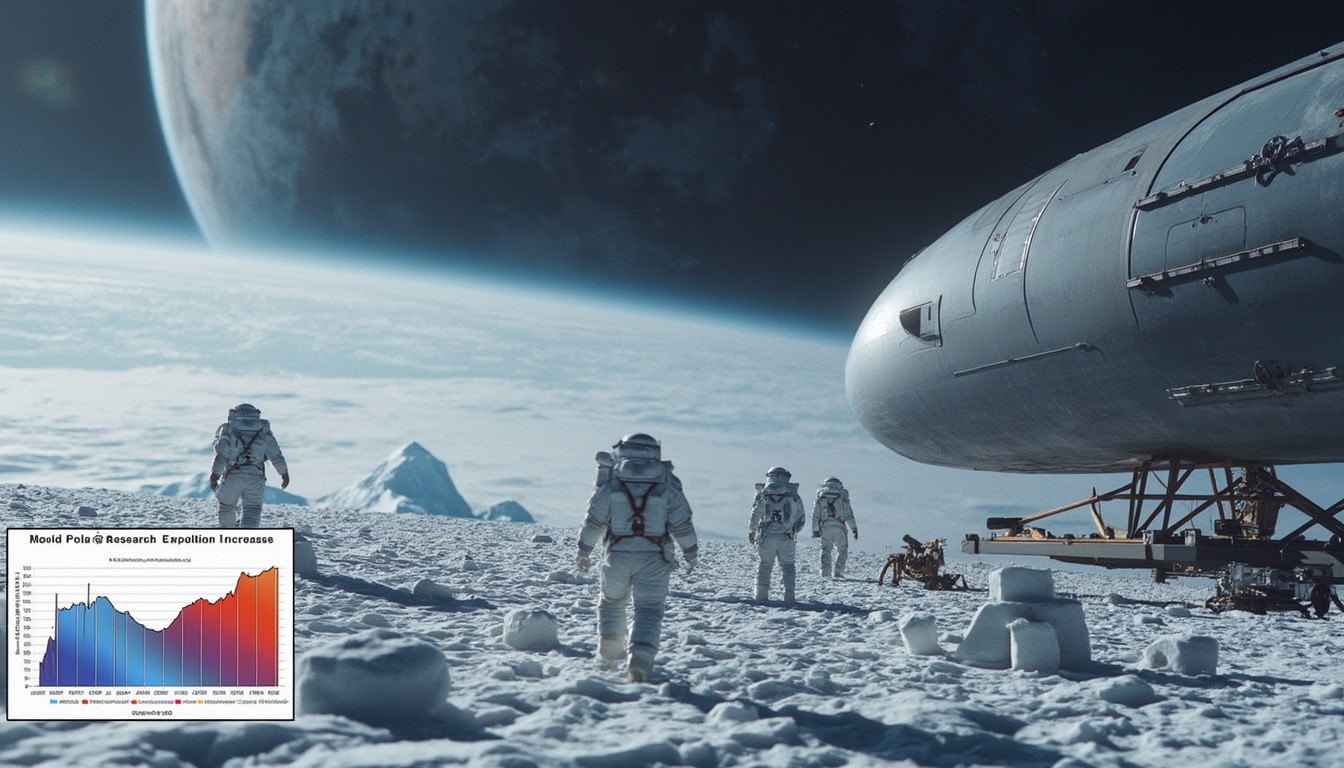SpaceX is set to embark on an unprecedented journey with its upcoming mission named ‘Fram2’. This mission will send a privately financed crew of astronauts on a groundbreaking adventure designed to achieve the first-ever crewed polar orbit around Earth. The implications of this expedition extend beyond mere exploration, promising remarkable insights into how humanity can engage with our planet from new perspectives. The Fram2 mission is the result of years of planning and illustrates significant advancements in commercial space travel.
With major players in the aerospace industry such as NASA, Blue Origin, Axiom Space, Boeing, Lockheed Martin, Northrop Grumman, Rocket Lab, and Sierra Nevada Corporation evolving the landscape, collaborations and private funding are becoming key trends. The Fram2 mission exemplifies how private entities are shaping the future of space exploration in association with traditional space agencies.
An Overview of the Fram2 Mission
The Fram2 mission represents one of the most daring projects that SpaceX has ever undertaken. Aiming to become the first human spaceflight to traverse the polar regions, this mission encapsulates innovation and ambition.

Mission Goals and Objectives
The primary goal of the Fram2 mission is to conduct a polar orbit, unlike any previous missions which have primarily focused on equatorial routes. Polar paths offer a unique vantage point, enabling thorough observations of the Earth’s surface, including remote areas and ice-covered regions. The objectives are multifaceted, ranging from scientific research to demonstrating how private enterprises can effectively launch and manage such ambitious endeavors.
This mission aligns with the growing recognition of the importance of Earth’s poles in understanding climate change. As ice caps continue to melt, data gathered from this mission will be invaluable for scientific communities worldwide, offering insights into polar dynamics and the effects of global warming.
Crew Selection and Training
SpaceX has announced a diverse group of astronauts selected for this mission. Each crew member brings a wealth of experience from different domains such as exploration, engineering, and scientific research. The chosen astronauts will undergo rigorous training sessions, including simulations of the space environment and emergency readiness drills.
Training will not only prepare the crew for the mission but also educate them on the equipment they’ll use, including the SpaceX Dragon spacecraft, which has been customized for the Fram2 mission. Extensive procedures are put in place to familiarize the astronauts with their specific roles, ensuring optimal performance during critical phases of the flight.
Technical Challenges and Innovations
Launching a mission to execute the first polar orbit encompassing crewed spaceflight is fraught with technical challenges. One primary concern involves the spacecraft’s navigation systems and engine performance, crucial for maintaining precision during the mission’s course. Northrop Grumman and Boeing are collaborating on systems to improve reliability and efficiency.
Moreover, the safety protocols implemented by SpaceX prior to the launch are essential to mitigating risks. By utilizing advanced telemetry and real-time data analysis, the team is confident in their capability to manage any unforeseen challenges that may arise throughout the mission.
The Importance of Private Space Travel
The emergence of private spaceflight is genuinely transforming how we perceive and conduct space exploration. Virgin Galactic and Blue Origin have made significant contributions in suborbital tourism. As these companies pave the way for civilian space travel, they underline the concept that space is no longer only the domain of national agencies like NASA.
Commercial Partnerships Enhancing Exploration
SpaceX’s Fram2 initiative is a prime example of how collaborative efforts within the private sector can yield groundbreaking results. Partnerships with companies such as Axiom Space are instrumental in extending the reach of human exploration. Axiom is constructing the world’s first commercial space station, aiming to host astronauts on longer-duration missions and enhance research opportunities.
Similarly, Lockheed Martin and Rocket Lab also play pivotal roles by providing technology solutions and logistical support that facilitate the Fram2 mission. Such cooperative efforts accentuate how the industry can unite to drive forward initiatives that were once solely on the shoulders of governmental agencies.
Fostering International Collaboration
The Fram2 mission is not just a singular achievement for SpaceX; it has garnered international interest and collaboration. Countries worldwide are taking notice of the potential advancements offered through space exploration. This mission encourages other nations to engage in joint ventures that explore scientific research and practical applications within their geographies.
Such international partnerships expand the horizons of space exploration and research, allowing rich cultural and scientific exchanges that can lead to enhanced global technology initiatives aimed at solving pressing challenges like space debris and climate issues. The mission characterizes a new era of space exploration that thrives on cooperation rather than competition.
The Broader Implications of Polar Exploration

The implications of achieving a crewed polar orbit with Fram2 extend beyond immediate scientific knowledge. This mission could set a precedent for future exploratory missions beyond Earth and prompt further studies into how humans can live and operate in space’s frontiers—specifically regarding sustainability and collaboration.
Addressing Climate Change Through Polar Studies
The mission is expected to collect vital data on ice cover, temperature fluctuations, and other climate metrics that researchers can analyze. This information is crucial as it provides a current snapshot of the Earth’s health, particularly as its poles are among the most affected regions by climate change.
This unique vantage point over polar areas permits researchers to assess changes that may not be observable through ground-based research. By harnessing data from such missions, scientists will be able to create predictive models for climate trends, helping policymakers make informed decisions.
Inspiring the Next Generation of Experts
The Fram2 mission aims to inspire future generations in STEM fields by showcasing the possibilities of space exploration. As young minds witness history in the making, it could galvanize interest in science and technology careers.
Moreover, the collaboration between private industry and national space agencies creates opportunities for educational programs that reach schools and communities. Even now, through outreach initiatives, SpaceX inspires students to consider how they might contribute to the world of tomorrow, whether in aeronautics or climate research.
The Future of SpaceX and Crewed Missions
The successful execution of the Fram2 mission will undoubtedly influence future endeavors by SpaceX. As this private space company stays at the forefront of aerospace engineering, they are continuously expanding their portfolio of projects, with ambitious plans for additional crewed missions in the coming years.
Expanding the Horizons of Civilian Space Travel
Future missions are expected to emphasize not only exploration but also commercial opportunities. The demand for civilian access to space may spur even more advancements in spacecraft technology. SpaceX aims to facilitate a variety of missions, potentially allowing both scientists and tourists to experience life in microgravity.
This expansion in accessibility extends beyond polar regions, with plans for missions to the Moon and Mars. Such endeavors could change the way we live on Earth and beyond, providing insights necessary for prolonged human presence on other planets.
Engagement with Global Populations
In a world that often seems divided, space offers a place where humanity can unite. Missions such as Fram2 showcase human potential and highlight that exploring space transcends national boundaries. The cooperation involved illustrates that exploration is a journey we undertake collectively.
As SpaceX continues to push the envelope of what is feasible in space, every mission tells a story of progress, hope, and determination. The lessons learned and experiences gained throughout the Fram2 project will serve generations of astronauts and innovators, allowing humanity to reach for the stars with confidence.




Leave a Reply